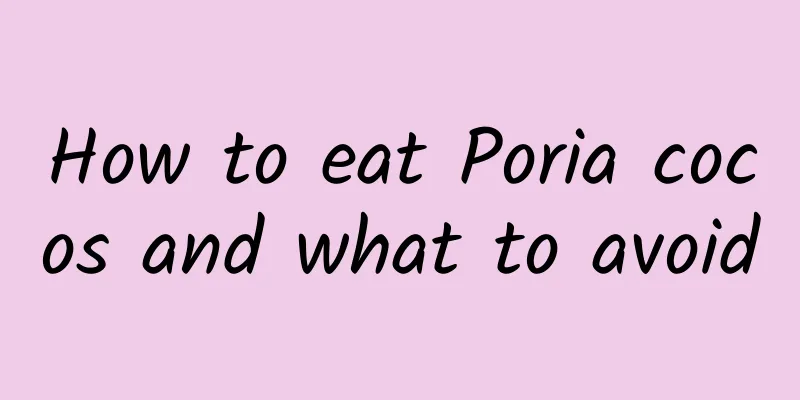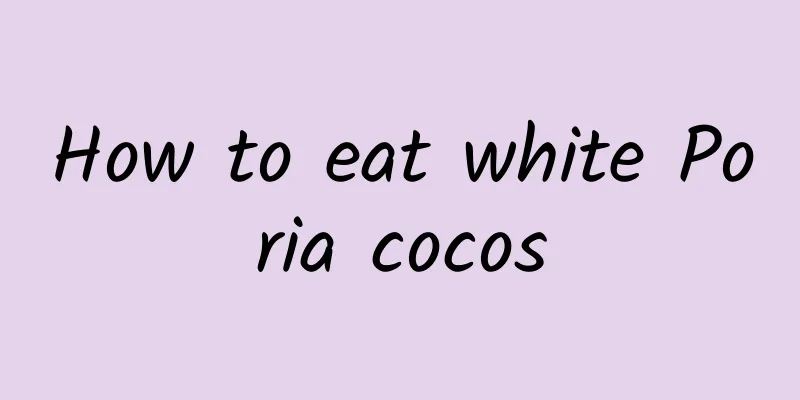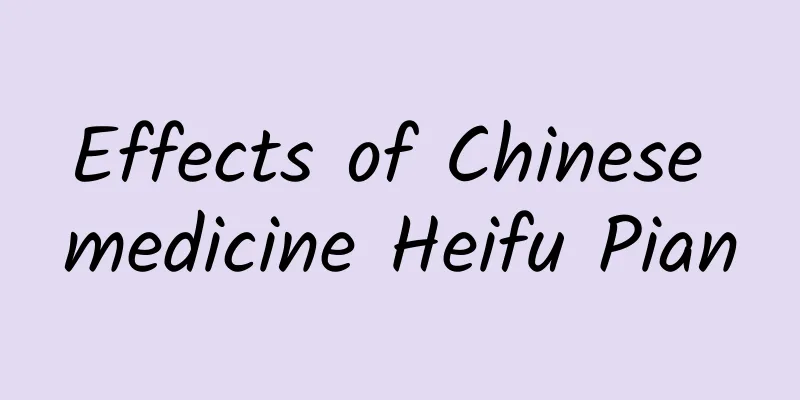How to eat Poria cocos and what to avoid

|
Poria cocos is a kind of traditional Chinese medicine. It can be used together with many other Chinese medicines to regulate the body and treat diseases. However, any Chinese herbal medicine has certain toxicity. Therefore, each medicine has its consumption contraindications. Before taking the medicine, you must first understand its efficacy and contraindications so that the medicine can work and effectively avoid dangerous situations such as drug allergies. Next, let’s take a look at how to eat Poria cocos and what it should and should not do. 1. Efficacy and contraindications of Poria cocos (I) Efficacy of Poria 1. Nourish the mind and calm the spirit: Poria cocos also contains some nutrients that can calm the nerves. Mental problems caused by work pressure or other reasons, such as frequent insomnia, frequent dreams, depression in life, lack of laughter, and overly tense nerves, can be relieved and cured by stewing Poria cocos, ginseng, and jujube kernels into a high soup. 2. Anti-cancer and anti-tumor: Poria cocos is rich in anti-cancer ingredients, including anti-cancer vitamins, trace elements, amino acids, etc. Eating Poria cocos can inhibit the production of cancer cells, destroy the DNA of cancer cells, remove carcinogenic free radicals in our body, etc. Whether it is used to prevent cancer or to treat cancer, Poria cocos has very obvious effects. 3. Treat cough, sputum, backache: Poria cocos also has a certain curative effect on colds, especially those caused by dampness and heat. The specific symptoms of colds are chronic cough, excessive sputum, and in severe cases, sore hands and feet, fatigue and back pain. Generally speaking, when this happens, you can achieve certain auxiliary treatment purposes by eating Poria cocos to make porridge or stew it. 4. Treat edema and promote urination: Poria has a good therapeutic effect on edema and difficulty urinating in the body, especially for people with sparse urination. Moreover, Poria cocos has a mild medicinal property, which can increase our urine volume without damaging our spleen and stomach. For people with difficulty urinating and edema, whether it is due to cold and dampness, dampness and heat or other types, they can eat Poria cocos for treatment without worrying that Poria cocos will increase the severity of the disease. (II) Taboos of Poria 1. Don’t eat Poria with rice vinegar. 2. Patients with kidney deficiency, polyuria, cold and spermatorrhea, qi deficiency and sinking, and dryness of body fluids should take with caution. 3. Patients with Yin deficiency without damp-heat, deficiency-cold spermatorrhea, or Qi deficiency and sinking should take with caution. 2. How to eat Poria cocos 1. Poria cocos and five-flavor porridge Ingredients: 10g Poria powder, 6g Schisandra chinensis, 100g polished rice. Preparation method: First wash the polished rice and Schisandra chinensis; then put the polished rice into the rice cooker, add Poria powder, Schisandra chinensis and water, and cook until the porridge is cooked. Efficacy: Removes dampness, strengthens the spleen, nourishes the heart qi. 2. Smilax glabra old turtle Ingredients: 500g turtle, 30g smilax glabra, 2g salt Preparation: First remove the turtle’s head and shell, clean it, and cut it into pieces. Then put the wild yam into a casserole, add appropriate amount of water and boil to extract the juice. When the juice is thick, turn off the heat, remove the residue and keep the juice. Finally, put the medicinal juice, turtle meat and salt into the pot, add a little water, and simmer until the turtle meat is cooked through, then turn off the heat. Efficacy: This soup clears away heat, detoxifies, strengthens the spleen and stomach, and treats red and yellow urine. 3. Poria cocos, Chinese yam and jujube porridge Ingredients: 50g polished rice, 20g poria cocos, 15g dried jujube, 20g dried yam, 30g brown sugar Preparation method: Remove the core of the jujube, cook it with Poria cocos, yam and rice into porridge, and add appropriate amount of brown sugar to taste. Efficacy: It can invigorate the spleen and stomach, eliminate dampness and stop diarrhea. It can be eaten frequently by children with spleen and stomach deficiency, poor appetite, loose stools, fatigue and weakness. Poria cocos is sweet and mild, and has the effects of diuresis and dehumidification, nourishing the spleen and stomach. When used with yam and jujube, it has a mild medicinal property, nourishes the spleen and stomach, and has a more effective effect of removing dampness and stopping diarrhea. |
<<: Chinese herbal medicine Atractylodes
>>: Can babies eat Poria cocos?
Recommend
The efficacy and function of gentian [picture]
We know that there are many kinds of Chinese medi...
The efficacy and function of Acer palmatum
Acer truncatum is a very common and frequently us...
The efficacy and function of buffalo tail
Since Chinese medicine has fewer side effects, mo...
Why do organisms always grow more and more like crabs? This phenomenon is called "crabization"
Crabs look majestic and taste delicious. They can...
The efficacy and function of olive plum juice
Traditional Chinese medicine has always been the ...
Effects of Digitalis on Heart Rate
Many people are not familiar with digitalis poiso...
A woman got blisters on her skin during an MRI exam, just because she was wearing a pair of nice yoga pants?
Wearing yoga pants can help you burn fat as long ...
Beware! Eating too fast increases the risk of diabetes
Recently, the topic "Eating too fast increas...
Science and Technology News | Scientists discover a new generation of anti-aging substances
【Today’s cover】 On the afternoon of December 7, t...
The efficacy and role of walking on the frontier
As the pressure of modern life increases, more an...
What is the effect of soaking ear root in water
When it comes to Houttuynia cordata, everyone mus...
It’s cold, is it good to wear socks to sleep?
As the weather gets colder, our friends in the so...
Since it was invented, patients with liver disease no longer have to go to the hospital.
When I was in college, I heard a rumor that peopl...
The efficacy and function of single-leg orange
As for monocot, I think some people may have hear...
The efficacy and function of pearl hydrangea
Pearl hydrangea is a kind of traditional Chinese ...









